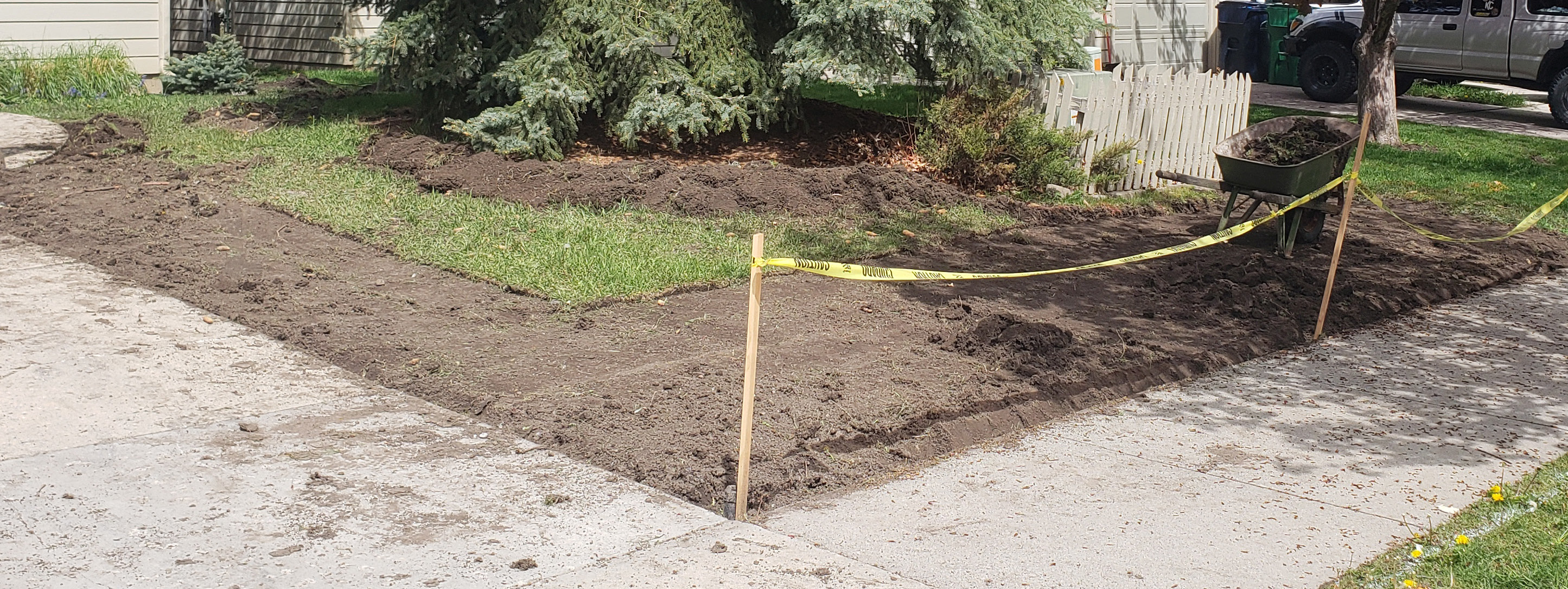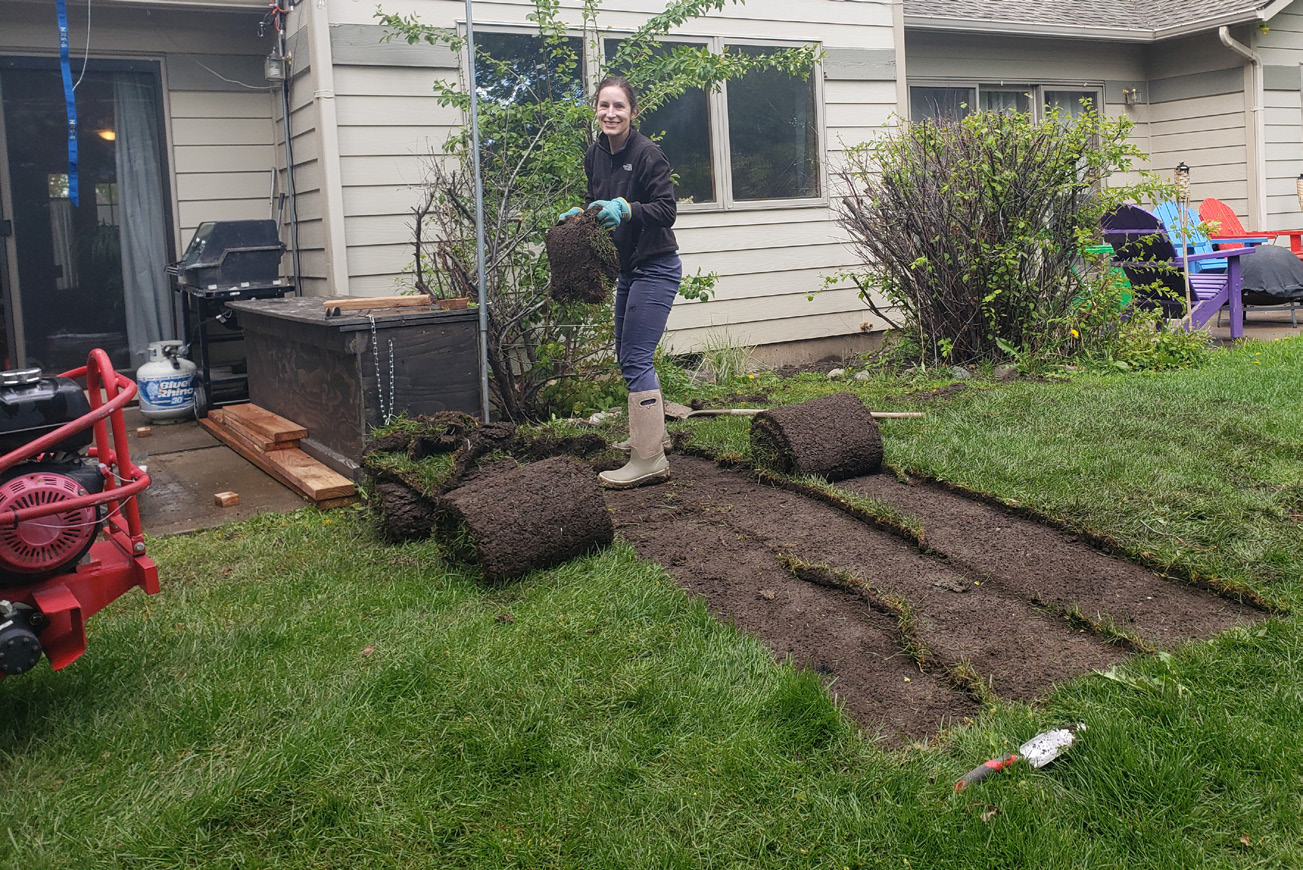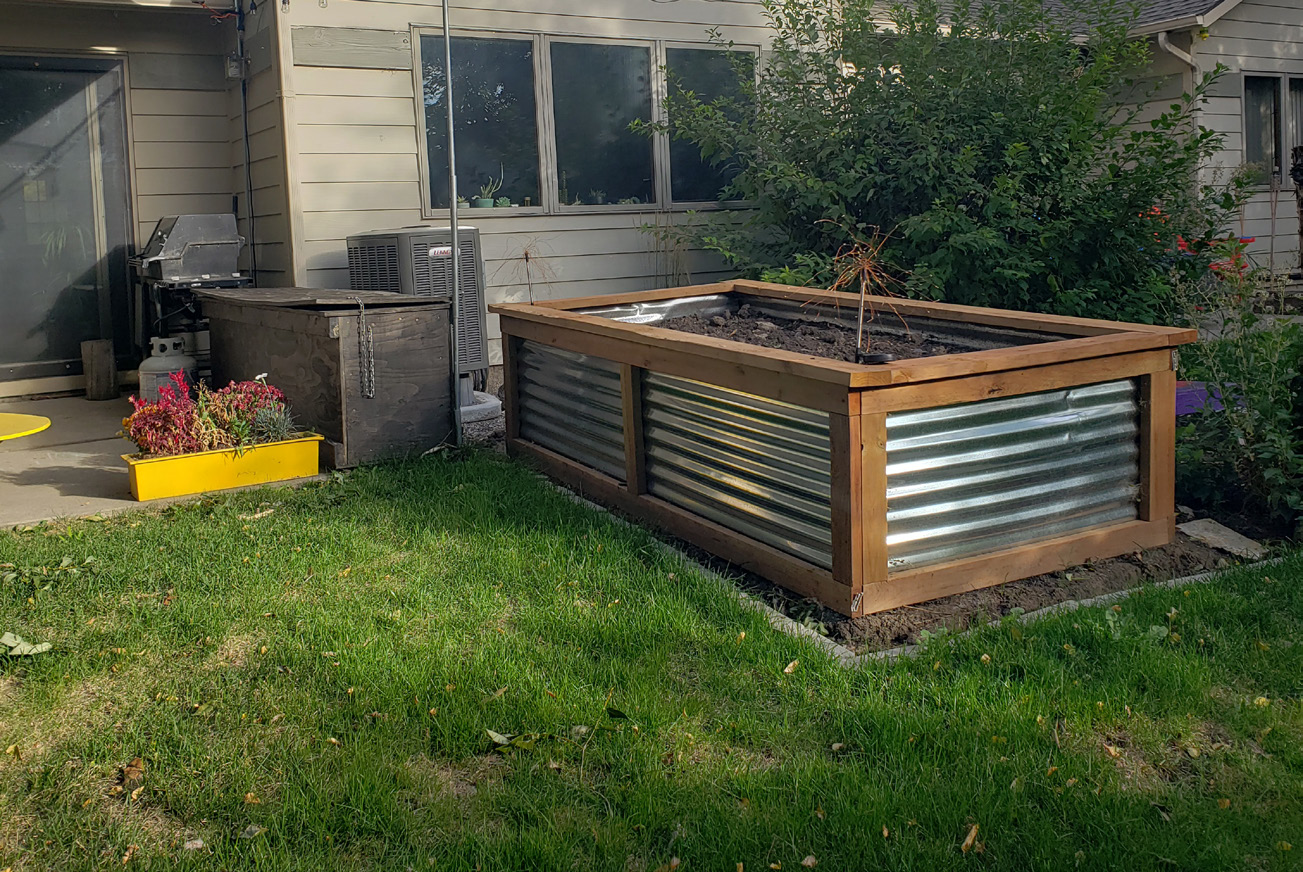Landscaping to Reduce Water Use
Approaches and Benefits with Turf Reduction
Montana is a semi-arid state and water supplies in many areas are under increasing pressure. For many homes, landscape irrigation uses the largest amount of household water. Reducing turf that requires irrigation is an effective way to minimize water demand. Due to limited water supplies, several communities are adopting restrictions on landscape irrigation, so identifying ways to reduce outdoor water use is becoming more important.
In Montana’s cool and semi-arid climate, the natural cycle for cool-season turfgrasses is to green up in spring, go dormant and brown in summer, and resume green growth in fall until winter dormancy. Irrigation breaks this natural cycle and facilitates green turf all summer. Pivoting away from irrigated turf to an alternative landscape can create a beautiful outdoor space with a diversity of colors and textures that improves soils, encourages biodiversity, supports pollinators, and can include edible or culturally significant plants, all while saving water.
Alternative landscapes commonly include areas with mulch on the surface to suppress weed growth. Wood chips and gravel are among the most common mulch materials. Gravel is an inorganic material, so it will not break down over time. Gravel is heavy to move and can reflect heat onto sensitive plants, limiting the landscapes it is suitable in. In landscaping projects that involve more hardscapes and less vegetation, or plantings that include plants suited for more desert-like conditions (such as certain ornamental grasses and succulents), gravel can be a good option. Organic mulches are more suitable for most permanent plantings. Organic mulches such as arborist wood chips are much lighter to move into place but will break down over time and require replenishment. As this mulch decomposes, it can improve soil quality by slowly adding nutrients. Wood chip mulch can help to insulate plant roots, reduce evaporation, and benefit plant health. All mulch is prone to fine materials settling into it, so weeds can start growing in the mulch over time. Raking wood mulch to reduce mold growth and remove weeds, as well as replenishing it as needed, are important components of maintaining a mulched landscape.

Beginning stages of turf removal. Take caution around trees; removing or adding too much soil under the canopy can have negative consequences. Photo: Adam Sigler, MSU Extension
Mulch can be placed directly on top of turf and if thick enough, it will kill the turf on its own. Stressing the turf by cutting it using the lowest mower setting during hot conditions can speed up this process and is a relatively easy approach that does not require chemicals. Place five to eight inches of a suitable mulch over the turf and give it time (several weeks, depending on the weather). You can plant directly into this new mulch by raking it back to incorporate suitable plants into the decomposed turfgrass. Applying an herbicide labeled for grasses is another option to remove the turf.
If you are working in a small space where current turf height matches surfaces like sidewalks, matching the top level of mulch to the sidewalk level will require removing sod and soil. Renting a sod cutter is very useful for removing the turf and most of the roots with the least amount of work. Strips of sod can be cut, rolled up and moved off-site or to the base of areas where more soil will be placed on top to create new raised beds. Soil with turf roots that are not killed before moving, buried deep, or followed with herbicide will continue to grow and require weeding to keep from growing in flower beds, so plan ahead.

Removing sod in the back yard for a raised bed. Photo: Adam Sigler, MSU Extension
Removing turf or soil to accommodate five to eight inches of mulch can mean moving a lot of soil. Planning for raised beds or elevated flowerbed areas close to turf removal areas can dramatically reduce work moving soil. Raised beds could be enclosed in flagstones or other materials, and/or individual vegetable garden areas can be built with lumber and other materials. Non-raised beds or low areas to capture moisture and create rain gardens can also be part of a thoughtfully designed landscape while reducing the need to move soil.
Putting weed barrier fabric underneath mulch is a common approach, but it is not typically necessary, especially if the mulch is more than five inches thick. Weed barrier fabric does nothing to address weed seeds that blow in on top of the mulch. Over time, portions of the fabric commonly make their way to the surface, shred into pieces, and can be unsightly. This can complicate reworking the mulch to remove weeds that will inevitably need to be managed. Weed barriers can also have negative impacts on soil health by reducing water and oxygen penetration and restricting organic matter from naturally integrating into the soil. As such, weed barriers should not be used around permanent plantings where soil health is important.
If you have a sprinkler system, removing turf likely means the need to cap sprinklers, disable/reroute lines, and possibly add drip irrigation to new bed areas. Plants should be grouped in a landscape based on watering needs (zones) to get the most efficiency from the irrigation. Sprinkler zones should be laid out to match these plant zones. Planning ahead by flagging irrigation heads and designing the new landscape in the context of existing irrigation zones will make the project easier. A map of the sprinkler system is very helpful for these decisions and if there isn’t one, cycle through the zones on the irrigation controller and sketch a map to save planning time.

Raised bed for a vegetable garden where turf was removed. Photo: Brooke Lahneman
Adam Sigler is the MSU Extension Water Quality Specialist; Abi Saeed is the MSU Extension Horticulture Specialist.
